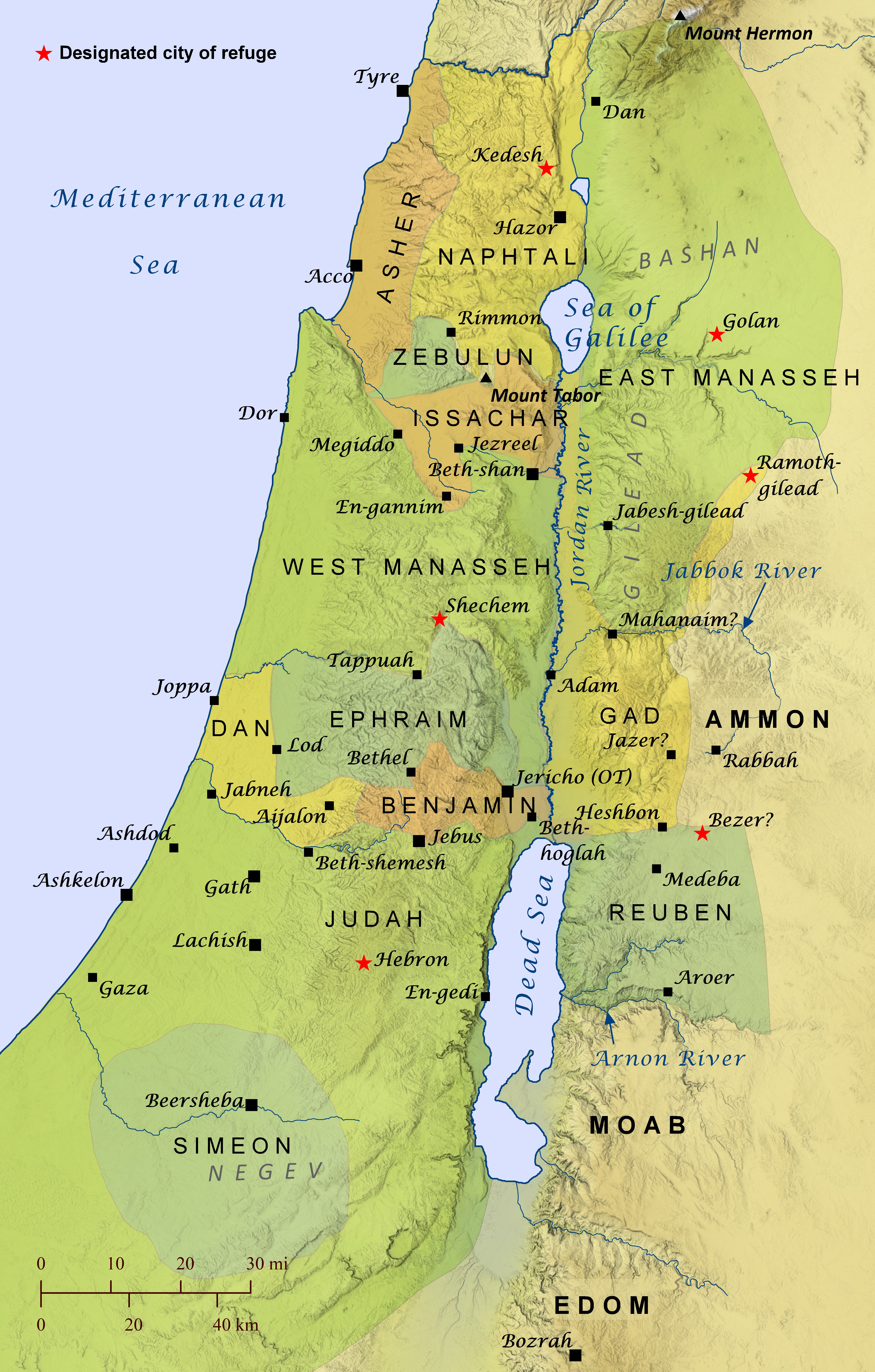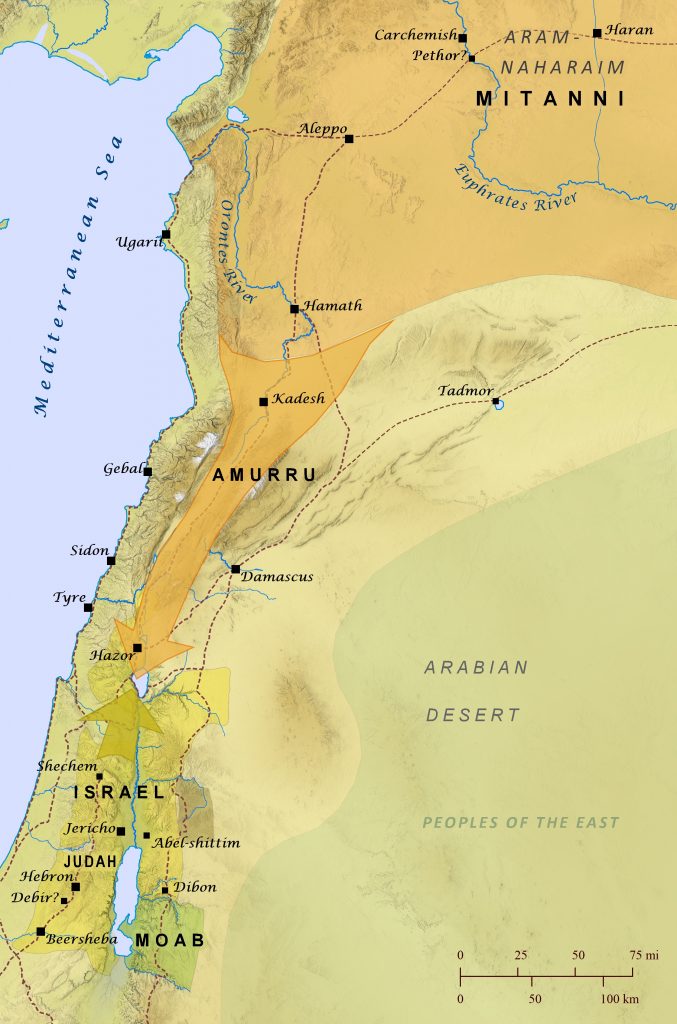Othniel Rescues Israel
Joshua 15:13-19; Judges 1:11-15; 3:8-11
Though Scripture affords Othniel son of Kenaz a mere six verses to detail his accomplishments, the significance of what he accomplished should not be underestimated. Othniel is first mentioned during the initial conquest of the land, and it is noted that he was the son of Kenaz, the younger brother of Joshua. As the Israelites were seeking to capture Kiriath-sepher (later renamed Debir), Caleb offered the reward of his daughter Achsah (Othniel’s cousin) as a wife for whoever could take the town. Othniel took the town and received Achsah as his wife, and Caleb also granted him the nearby springs. After this, the writer of Judges recounts how the Israelites lived among the pagan inhabitants of the land, intermarried with them, and worshiped their gods. Therefore the Lord became angry with them, and he allowed them to be dominated by King Cushan-rishathaim of Aram-naharaim, who ruled over most of northwest Mesopotamia. This was the same land where Abraham lived before journeying on to Canaan (Genesis 11:27-31; also see “The World of the Patriarchs” map), the homeland of Isaac’s wife Rebekah (Genesis 24:10), the land to which Jacob fled to escape the wrath of his twin brother Esau (Genesis 28; also see “Jacob Goes to Paddan-Aram” map), and the homeland of Balaam son of Beor (Numbers 22:4-5; also see “Balaam Blesses Israel” map). As the first judge of Israel, Othniel led Israel from about 1374-1334 B.C., so it is likely that the kingdom of Cushan-rishathaim was the Mitanni kingdom, which ruled Aram-naharaim from about 1600-1260 B.C. If this is true, it is likely that Cushan-rishathaim was Eriba-Adad I, who ruled Mitanni from about 1390–1366 B.C. The name Cushan-rishathaim, meaning “Cush of the two wickednesses,” may have been an intentional corruption in Hebrew of an otherwise unknown name of Eriba-Adad I. By Othniel’s time, the Mitanni kingdom was beginning a period of decline, so their oppression of the newly established Israelite tribes may have been an attempt to reestablish their dominance throughout the region. Scripture succinctly notes that “the spirit of the Lord came upon [Othniel],” and he waged war against Cushan-rishathaim and defeated him, and the land of Israel had rest for forty years (Judges 3:10-11). Othniel’s bravery during this early period of Israel’s settlement in Canaan ultimately led the nation to victory and survival during a very vulnerable period of their history. And although the Mitanni kingdom continued to rule Aram-naharaim for another century, Othniel’s actions undoubtedly contributed to its continued decline and eventual collapse.

Tribal Allotments of the Promised Land
After the Israelites had conquered portions of the Promised Land and Joshua had grown old, the Lord directed him to divide the rest of the land among the tribes of Israel as their inheritance (Joshua 13-20). The eastern tribes had already been allotted their land under Moses’ leadership (Numbers 32), but they continued to help the other tribes drive out the Canaanites from land west of the Jordan River. The Lord also instructed the Israelites to designate several cities of refuge, where someone could flee for protection from an avenger if they accidentally killed someone (Numbers 35; Joshua 20).
